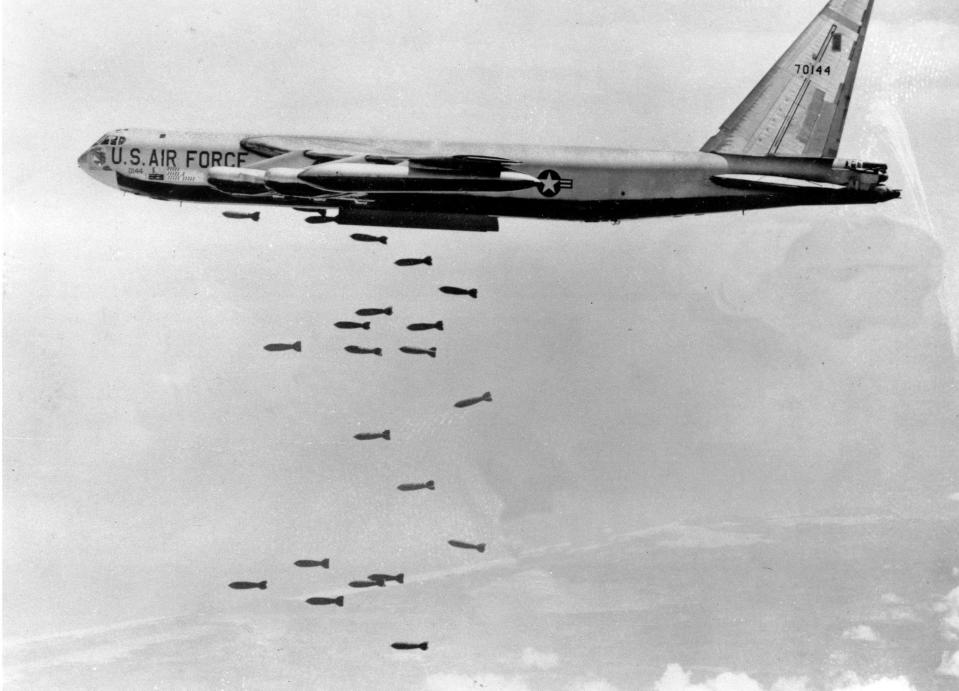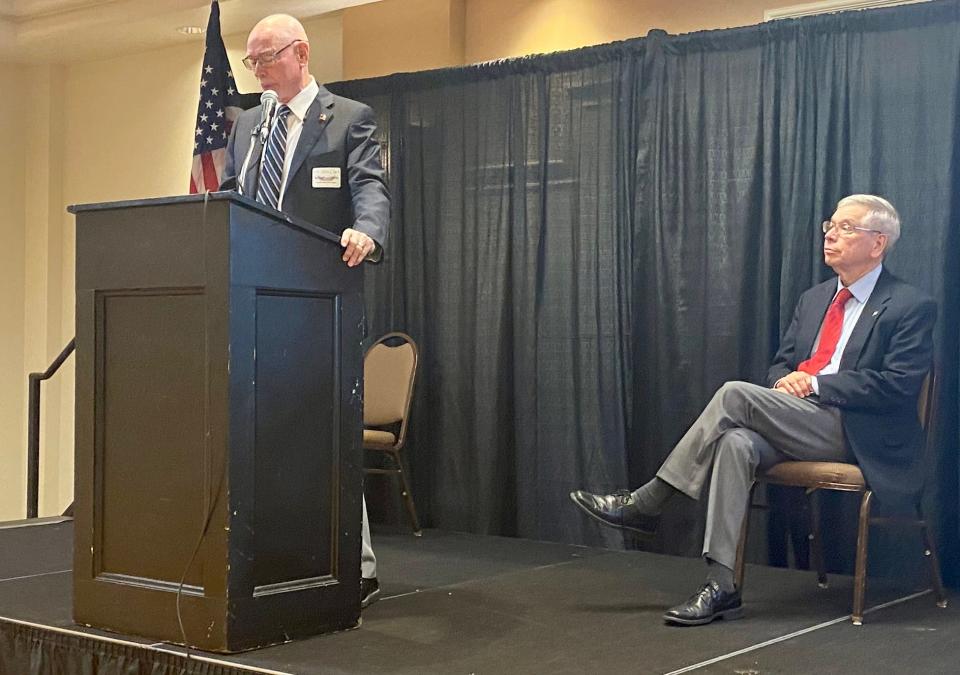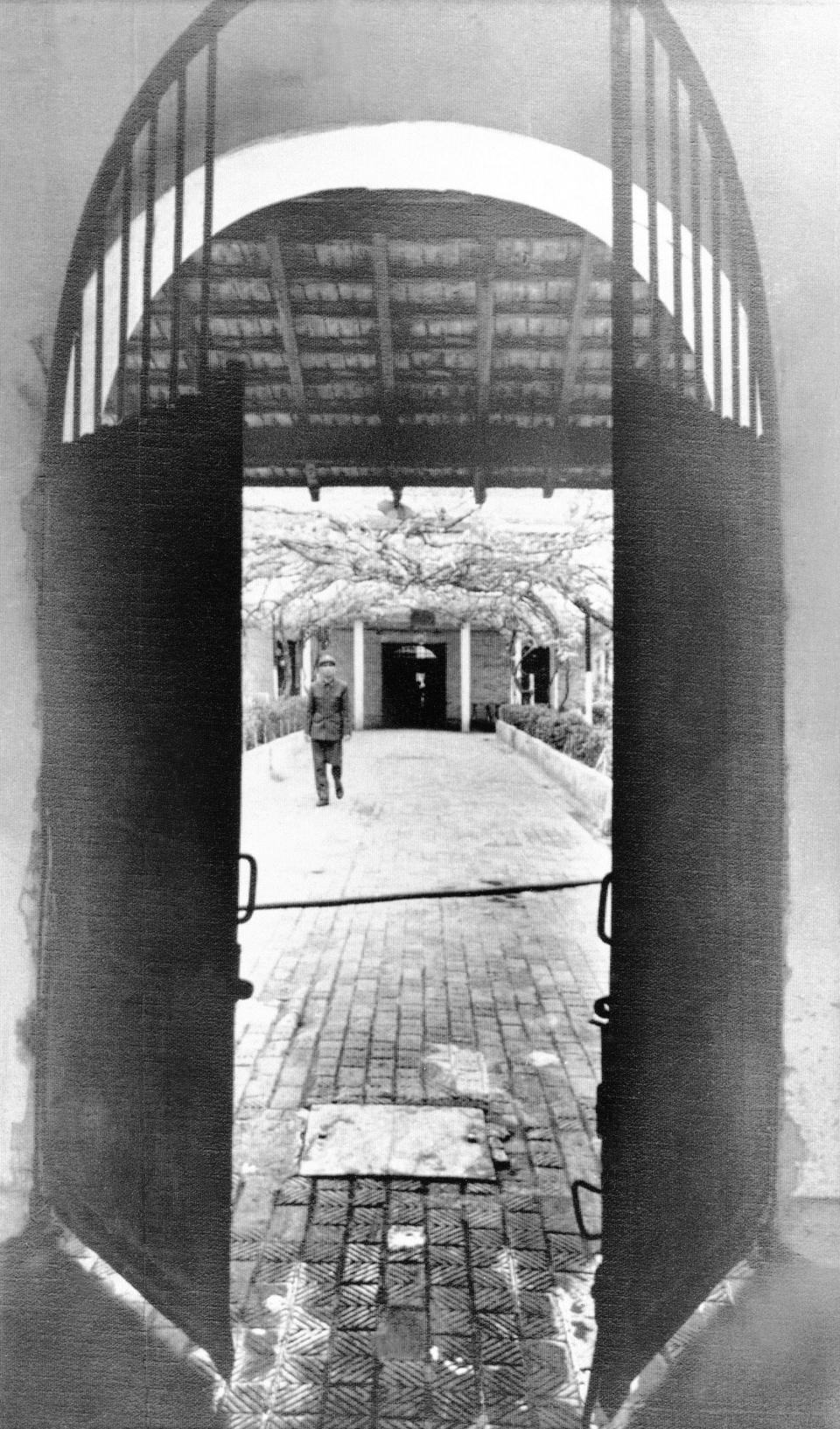The Vietnam War from the perspectives of 2 American veterans, as told to Columbia audience
Two people who had very different experiences of the Vietnam War shared their stories Wednesday with a Columbia audience at the Holiday Inn Executive Center.
The National Stars and Stripes Museum and Library in Bloomfield sponsored the event. Several veterans, active-duty military and ROTC cadets were in the crowd.
First up was Wayne Wallingford, a former B-52 pilot during the war, a former state senator and the current director of the Missouri Department of Revenue. He's a retired Air Force colonel.

"I'm going to tell you what it was like from 35,000 feet, and Col. Clark will tell you what it was like at ground level," Wallingford said, referring to the other speaker, John Clark.
Wallingford flew missions during 11 days of bombing of North Vietnam at the end of 1972, to convince the North Vietnamese to negotiate.
"It was the largest B-52 commitment during the war," Wallingford said. "It rained destruction on North Vietnam during those 11 days."
North Vietnam was heavily defended, he said.
"No one thought the B-52s would be able to survive flying in such a densely defended target area as that," Wallingford said.

Several of the bombers were lost, he said.
The B-52 was a "flying bomb," Wallingford said. It had 312,000 pounds of fuel and 70,000 pounds of bombs.
"You get hit by a surface-to-air missile, and your odds aren't good," Wallingford said.
His plane did get hit during a sortie but survived, he said.
The North Vietnamese ran out of missiles, and they couldn't be resupplied because the infrastructure had been destroyed, he said.
"We had the North Vietnamese at their knees," he said.
North Vietnam returned to the negotiations, and the war was over by late January, with 591 American prisoners of war returned home by March, including Clark.

"Now you have heard from the rescuer, and I will give you a little bit what it was like to be rescued," said Clark, of Columbia. He's also a retired Air Force colonel.
After nearly six years, he was tired of being a prisoner of war, he said.
Their prison camp was in the center of Hanoi, the capital city of Vietnam.
"One of the discussions that persisted was between the pessimists and the optimists" among the prisoners, he said.
If there was a tiny piece of pork in their "sewer grass soup," he said the optimists thought they were being fattened to go home.
Another discussion was whether our country would negotiate for their release during peace talks or if they would be tried as war criminals and executed.
"The argument of the pessimists was we were just a big liability," he said.
Being what he termed a "logical realist," Clark said he thought that his country wouldn't allow them to be forgotten.

It was winter 1972, but they didn't keep track of dates.
"The ground one day jiggled like a bowl of Jell-O," he said.
There were aftershocks. An earthquake?
"It was kind of a mystery to us," he said. "But then we heard the thunder."
The sky was clear.
"Holy cow, nothing could do that but our BUFFs, our B-52s," Clark said.
The response was immediate.
"When the B-52s came to town, Hanoi just erupted like a volcano" with anti-aircraft missiles, Clark said.
The prisoners watched the bedlam over the next 11 days with glee, he said.
Some pilots flew the bombers low over the prison, causing prisoners to cheer.
By early 1973, he and the other prisoners were released and they headed back home, he said.
There must be an accounting of those still missing, he said.
Roger McKinney is the education reporter for the Tribune. You can email him at rmckinney@columbiatribune.com or 573-815-1719. He's on Twitter at @rmckinney9.
This article originally appeared on Columbia Daily Tribune: The Vietnam War from the perspectives of two American veterans

